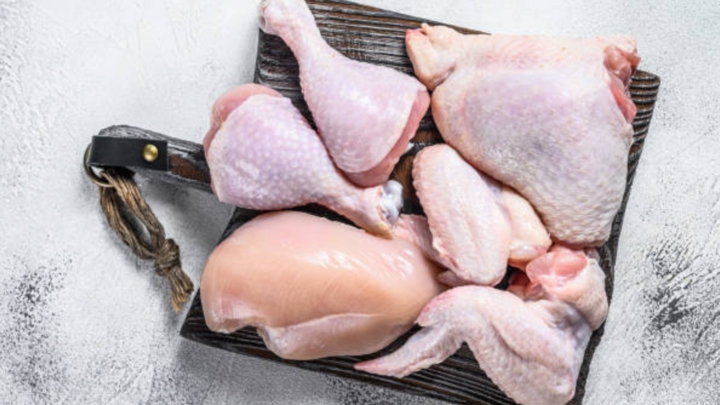Chicken is a favorite dish for many due to its delicious flavor, versatility in cooking, and high nutritional value. However, it’s essential to know how to select fresh, clean, and safe chicken.
Signs to Look Out For When Buying Chicken
Chicken is sold in markets, stores, and supermarkets, but the quality can vary. If you notice any of the following signs, it’s best to avoid purchasing the chicken.
Unstable Color
When choosing chicken, the first thing you’ll notice is its color. Fresh chicken typically has a pink or light pink hue. If the meat appears pale, dull, or greenish-gray, it’s likely spoiled.
For cooked chicken, the meat should be white to light brown. However, check for mold, especially if it has been stored in the fridge for over three days.
Additionally, when buying cooked chicken, avoid meat that feels slimy or too wet. Chicken stored in the fridge should feel firm, white, and soft, indicating it’s still safe to consume.
Unpleasant Odor
If you come across chicken with a putrid or fishy smell, it’s a clear sign that it has gone bad. Do not purchase chicken with this odor. It’s best to discard such pieces rather than attempting to rinse or salt them as some people do out of frugality.

When buying chicken, pay attention to its color and aroma (Illustrative image: istock)
Strange Taste
For cooked chicken leftovers stored in the fridge, take a small bite to test. If it tastes sour, metallic, or bitter, it’s best to discard it as the meat has likely spoiled.
Improper Chicken Thawing
Some people leave frozen chicken out at room temperature for hours before cooking, unaware that this practice promotes bacterial growth. The USDA recommends keeping food chilled (below 4.5°C) until it’s cooked. The “danger zone” for frozen chicken is any temperature between 4.5°C and 60°C.
If you need to thaw chicken, do so safely by leaving it overnight in the fridge. Then, place the chicken in a bag or plastic container to thaw completely, avoiding cross-contamination with other foods.
Another way to thaw chicken is to submerge it in water while keeping it sealed. Ensure the water is changed every 20-30 minutes, and cook the chicken immediately afterward to minimize risks.
Damaged Packaging
For convenience, supermarkets often package chicken in trays with wrapping. When buying these, carefully inspect the packaging, including the production date, for any tears or punctures, and check if the chicken is leaking fluids.
If you notice any rips, punctures, or openings in the tray, it’s best to avoid purchasing it.
Health Benefits of Chicken
Chicken is a great source of protein and is favored by those seeking muscle growth and healthy weight loss, as it’s lean when the skin is removed.
According to an article by Vinmec International General Hospital, chicken contains high levels of tryptophan, which increases serotonin levels in the brain, improving mood.
Homocysteine, an amino acid harmful to cardiovascular health, can be controlled by eating chicken, thus protecting the heart and preventing cardiovascular diseases. Chicken is also rich in phosphorus and calcium, which promote bone and tooth development and prevent osteoporosis and dental issues.
Chicken contains retinol and alpha and beta-carotene derived from vitamin A, benefiting eye health. Vitamin B6 in chicken boosts metabolism, aiding digestion without retaining fat, and facilitating weight loss.
Niacin, an essential vitamin found in chicken, helps fight cancer. Therefore, consuming chicken protects the body from genetic damage and reduces the risk of cancer.
According to VTC News






























